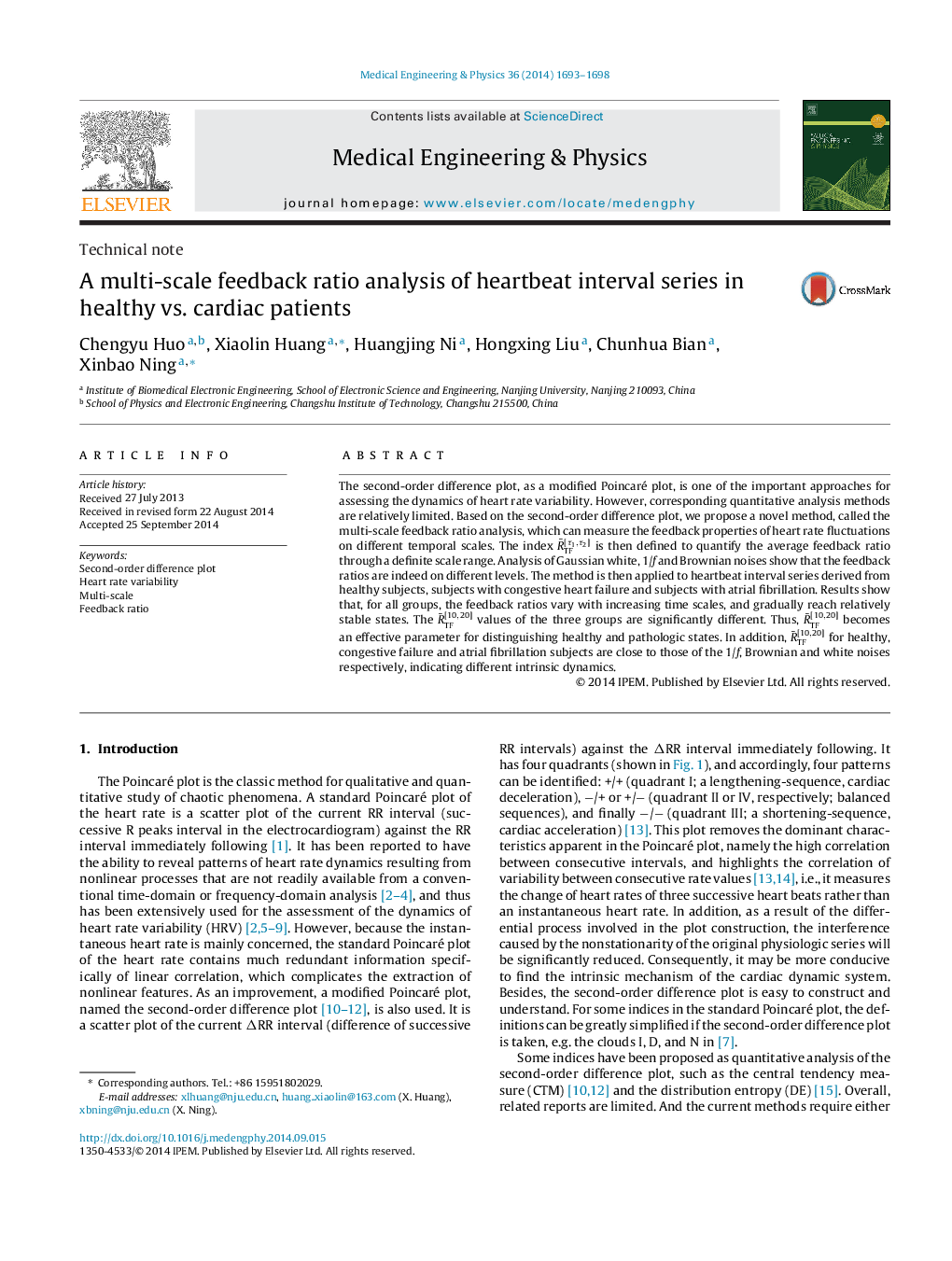| Article ID | Journal | Published Year | Pages | File Type |
|---|---|---|---|---|
| 875841 | Medical Engineering & Physics | 2014 | 6 Pages |
•A quantitative analysis method is proposed based on second-order difference plot.•An effective index is extracted for distinguishing healthy and pathological states.•The method can be implemented easily and relatively fast.
The second-order difference plot, as a modified Poincaré plot, is one of the important approaches for assessing the dynamics of heart rate variability. However, corresponding quantitative analysis methods are relatively limited. Based on the second-order difference plot, we propose a novel method, called the multi-scale feedback ratio analysis, which can measure the feedback properties of heart rate fluctuations on different temporal scales. The index R¯TF[τ1,τ2] is then defined to quantify the average feedback ratio through a definite scale range. Analysis of Gaussian white, 1/f and Brownian noises show that the feedback ratios are indeed on different levels. The method is then applied to heartbeat interval series derived from healthy subjects, subjects with congestive heart failure and subjects with atrial fibrillation. Results show that, for all groups, the feedback ratios vary with increasing time scales, and gradually reach relatively stable states. The R¯TF[10,20] values of the three groups are significantly different. Thus, R¯TF[10,20] becomes an effective parameter for distinguishing healthy and pathologic states. In addition, R¯TF[10,20] for healthy, congestive failure and atrial fibrillation subjects are close to those of the 1/f, Brownian and white noises respectively, indicating different intrinsic dynamics.
